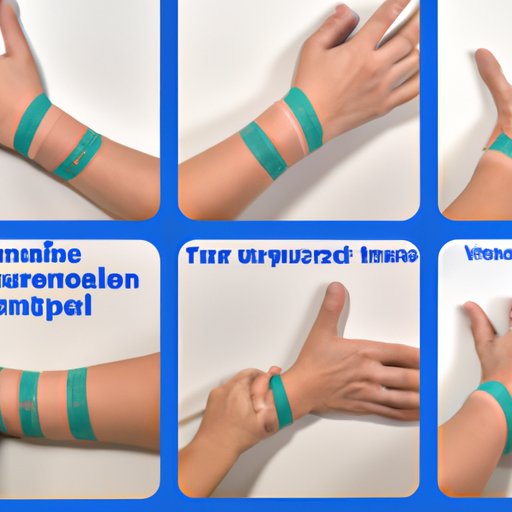
I. Introduction
Carpal tunnel syndrome is a condition that affects millions of people worldwide. It can be caused by a variety of factors including repetitive motions, poor posture, and genetics. The symptoms can be debilitating and affect daily life, making it essential to prioritize prevention and early intervention. In this article, we’ll explore various techniques, exercises, and tips to help prevent carpal tunnel syndrome.
II. Proper posture and ergonomics
One of the essential steps in preventing carpal tunnel syndrome is maintaining good posture and ergonomics. Proper posture can help reduce pressure on the nerves and muscles in the hands and wrists. Ergonomics is the study of designing equipment and devices that can be used efficiently and safely.
When setting up your workspace, consider the following tips:
- Make sure your chair is at the right height so that your wrists and hands remain parallel to the ground
- Ensure your keyboard is located at a comfortable distance and angle from your body
- Use a keyboard and mouse pad with proper support, reducing strain on the wrists and hands
- Adjust the lighting to reduce the strain on the eyes.
III. Stretching and exercise
Another essential technique to prevent carpal tunnel syndrome is regular stretches and exercises. Stretching and exercise fortify the muscles and tendons of the wrist and hand area, which can help prevent strain and damage. Here are a few simple stretches:
- Wrist flexing: Hold your hand out in front of you with your palm facing up. Use your opposite hand to gently pull the fingers towards your body. Hold for 30 seconds and then release. Repeat with the other hand.
- Finger flexing: With your palm flat on a tabletop or desk, spread your fingers wide apart, hold for 5 seconds, and then make a tight fist. Repeat ten times.
- The handshake: Extend your arm and hold your hand straight out. With your palm facing down, use the other hand to gently pull your fingers downwards, stretching your wrist. Hold for 30 seconds and then release. Repeat with the other hand.
Try to incorporate these exercises into your daily routine to create a healthy habit of stretching.
IV. Taking breaks
Taking breaks is essential to preventing carpal tunnel syndrome. When you take frequent breaks, you allow your wrist and hand muscles to relax and recover. Taking regular breaks can also help you maintain good posture and avoid strain or tension in the muscles.
If you work at a computer for long periods, it’s recommended that you take a short 5-10 minute break every hour. During these breaks, you can stretch, move around, or perform exercises that will help relax your muscles. Try incorporating stretching exercises such as wrist extensions and wrist flexing.
V. Reducing repetitive motions
Performing the same motion repeatedly can contribute to carpal tunnel syndrome. That’s why it’s important to switch up your daily routine and avoid any repetitive motion that can cause undue stress to the muscles.
For instance, instead of typing all the time, consider using voice dictation software. If you’re doing manual work, try to take frequent breaks and stretch regularly to avoid repetitive strain injury. Consider changing the position of your hands and wrists frequently to avoid stress in any one area.
VI. Ice and heat therapy
Treating the symptoms of carpal tunnel syndrome is essential. Ice and heat therapy can be especially helpful in reducing pain and swelling, creating a beneficial environment for your muscles to recover and participate in preventative activities.
For ice therapy, apply an ice pack wrapped in a towel to your wrist area for ten to fifteen minutes. For heat therapy, apply a heat pack or warm towel to the affected area for ten to fifteen minutes Twice a day.
VII. Consulting with a doctor
While preventative techniques are effective, they may not always be enough to prevent carpal tunnel syndrome. Consulting a doctor is recommended if ongoing pain or other symptoms occur. A doctor can help you determine the severity of the condition and recommend the best course of treatment.
The treatments offered by a medical professional may include Wrist splint, pain relief medication, or surgery in severe cases.
VIII. Conclusion
Carpal tunnel syndrome can be prevented with adequate knowledge, commitment, and a few lifestyle changes. By incorporating proper posture and ergonomics, regular stretches and exercise, taking breaks, reducing repetitive motions, and follow-up as needed, you can heip maintain happy, healthy, and productive hands and wrists for years to come.
Remember always to seek the advice of a doctor if you experience regular or ongoing pain.





